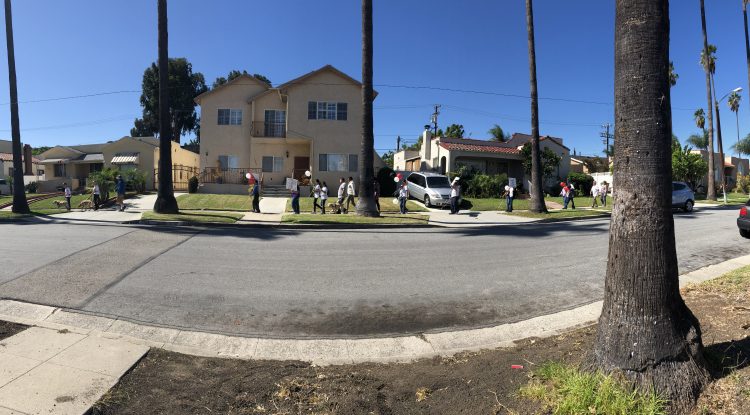Today Wayfinder staff and students celebrated National White Cane Safety Day. The day celebrates the achievements of people who are blind or visually impaired and the white cane, a symbol of independence. The residents and students in Wayfinder’s programs for the visually impaired are learning how to navigate public spaces and transportation, use assistive technology and live independently.
Wayfinder staff from various departments participated in blindfolded obstacle course races using the white cane, a component of our orientation and mobility training program. Later in the day students and staff walked around our main campus’ View Park neighborhood of Los Angeles to raise awareness for White Cane Safety Day.
How White Canes Work
The blind and visually impaired use their senses of hearing and touch to explore and understand the world around them. The white cane, in effect, makes their hands and arms longer, so that they can assess the situation, and move quickly and confidently. The white cane allows them to avoid obstacles, find steps and curbs, locate and step over cracks or uneven places in the sidewalk, find doorways, get into cars and buses, and much more.
What to Do When You See Someone Using a White Cane
When you see a blind or visually person uses a white cane, remember that the cane is a tool to safely and assists them to independently navigate the environment. There’s no need to shout warnings or try to physically steer them so that our canes won’t bump into things.
If you are driving or cycling and see someone using a white cane, you should follow your local city or state laws and stop to give them the right of way.
Acknowledge the Utility of the Canes’ Color
While it’s important to recognize the cane’s symbolic significance to many users’ identities, the cane also serves a more literal purpose. A white cane in particular legally identifies someone as blind or visually impaired. This is most important as an indicator to motorists that a pedestrian may not be able to see them. The white cane also informs others of someone’s visual impairment, which can inform conversation between a blind person and other people. Note that white canes are sometimes tipped or striped with red, yellow, or blue. The only important aspect of these cane’s color is that they are mostly white – as this indicates to others that the user is blind or visually impaired.
October 15, 2018


